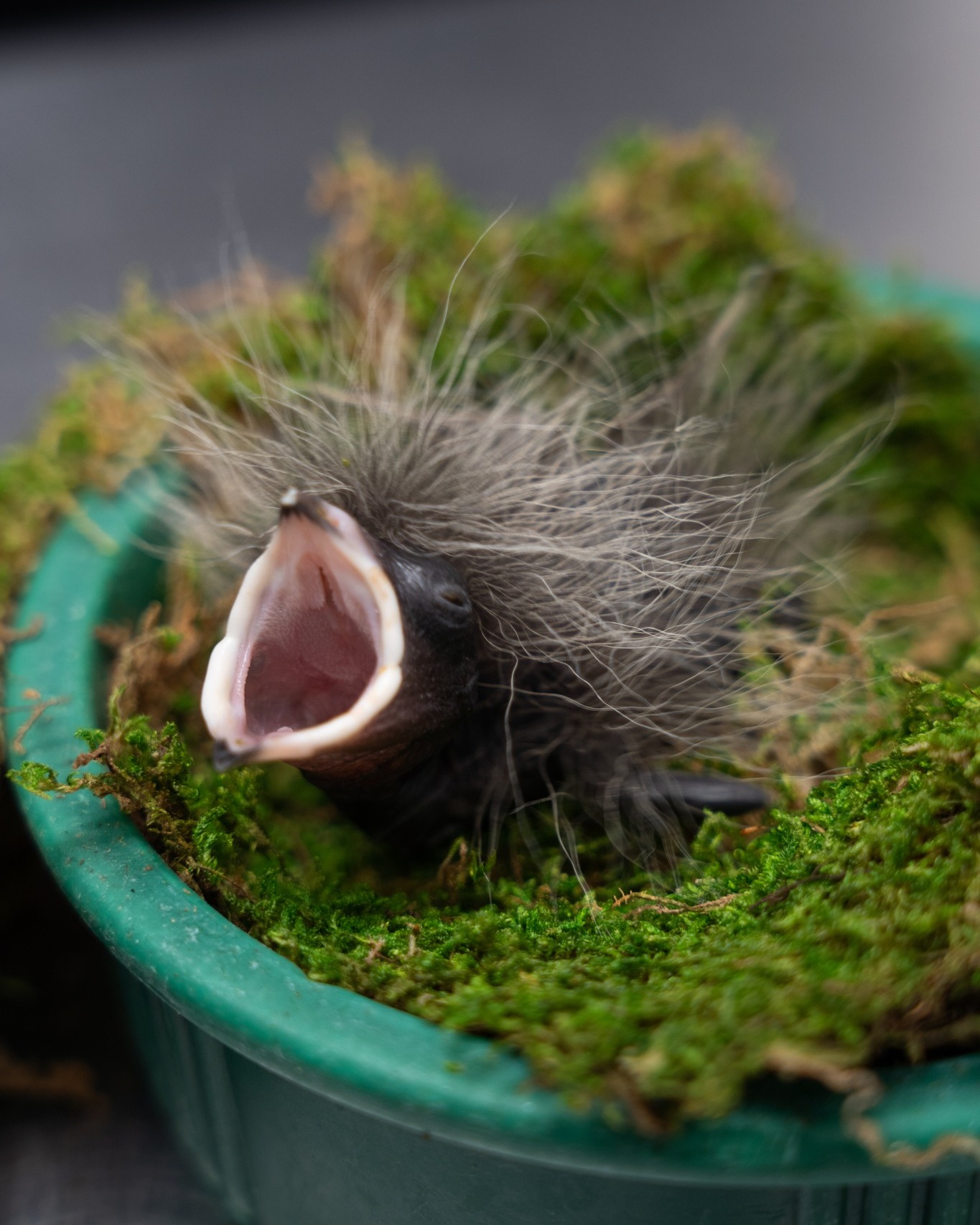Summary:
– The newest addition to our family is a lively 5-day-old Cock of the Rock.
– Despite its adorable bedhead, this little one is already full of energy.
– Learn about the development of their feathers and the unique characteristics of this species.
Introducing the newest addition to our family – a lively 5-day-old Cock of the Rock! We are thrilled to have this little bundle of joy join our zoo family, and we can’t wait to see it grow and thrive. Don’t be fooled by its adorable bedhead; this little one is already bursting with energy and curiosity.
As this Cock of the Rock grows, its feathers will be a prominent feature. Feathers play a crucial role in the lives of birds, providing them with insulation, flight ability, and protection. Like many bird species, the Cock of the Rock has specialized feathers that are beautiful and functional.
Feather development is a fascinating process that starts before this little Cock of the Rock hatches. The tiny cells called “papillae” begin to form inside the eggplant, containing the genetic information to determine the feathers’ color, pattern, and structure. Once hatched, the young bird’s feathers start to emerge.
The initial feathers, known as “natal down,” are soft and provide warmth and protection. These fluffy feathers cover the young Cock of the Rock’s body, helping it retain heat and stay comfortable. Over time, as the bird grows, these natal down feathers will be replaced by adult feathers.
The adult feathers of the Cock of the Rock are a sight to behold. The males of this species boast vibrant plumage, with a bright orange crest and a dark, velvety body. Conversely, females color with a mixture of brown and gray tones. These distinct differences in feather coloration help the males attract mates during the breeding season.
Feathers are not just for show in the Cock of the Rock; they also serve a practical purpose. In addition to insulation and protection, feathers enable these birds to fly precisely and gracefully. The shape of the feathers, particularly the wing feathers, allows for efficient gliding and maneuvering in the air. This ability to fly is essential for the Cock of the Rock’s survival in its natural habitat.
Beyond their feathers, the Cock of the Rock possesses unique characteristics that make them truly fascinating creatures. One such trait is their elaborate courtship displays, performed by the males to attract females. These displays involve intricate dances, vocalizations, and aerial acrobatics that would make any human suitor blush with envy. It’s a true spectacle of nature that showcases the male’s fitness and genetic quality.
The Cock of the Rock’s diet is another interesting aspect of their lives. As omnivores, these birds feed on various fruits, seeds, insects, and even small vertebrates. Their robust beaks allow them to crack open nuts and fruits, while their keen eyesight helps them spot potential prey. It’s incredible to think about the versatility of their diet and how it contributes to their overall health and well-being.
While our little Cock of the Rock is only 5 days old, it’s important to remember that these birds can live up to 25 years in the wild with proper care and sufficient resources. They are known for their adaptability and resilience, allowing them to thrive in diverse habitats ranging from tropical rainforests to mountainous regions.
In conclusion, we are privileged to have the newest addition to our zoo family – a lively 5-day-old Cock of the Rock. This little ball of energy will continue to grow and develop its beautiful feathers, showcasing nature’s incredible design and adaptability. As we observe its growth, we are reminded of the wonder and beauty found in the animal kingdom. So next time you visit the zoo, take a moment to appreciate the unique and fascinating aspects of the Cock of the Rock and celebrate the diversity of nature’s creations.
*****
Source Description
Introducing the newest addition to our family – a lively 5-day-old Cock of the Rock! Despite the adorable bedhead, this little one is already full of energy. Their feathers will begin to develop as they get older.

